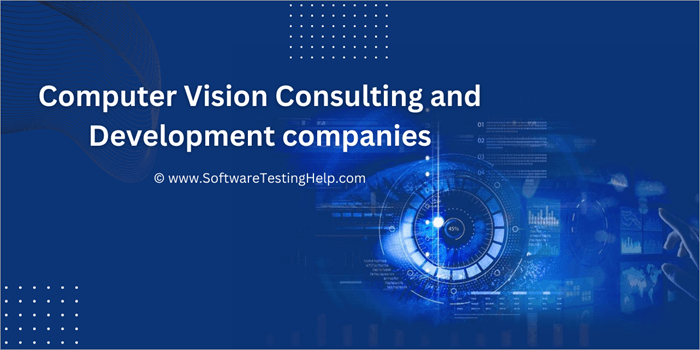Computer vision software development company – The field of computer vision is rapidly evolving, driving innovation across numerous industries. This burgeoning sector necessitates the expertise of specialized computer vision software development companies. These companies leverage cutting-edge algorithms and technologies to build applications that enable computers to “see” and interpret the world around them, much like humans. This guide provides a detailed overview of these companies, their services, the technologies they employ, and the future of this exciting field.
Understanding Computer Vision Software Development
Computer vision software development involves creating algorithms and software that allow computers to extract meaningful information from images and videos. This goes beyond simple image recognition; it encompasses tasks such as object detection, image segmentation, facial recognition, and 3D reconstruction. The process typically involves several key steps:
Key Steps in Computer Vision Software Development
- Data Acquisition and Preparation: Gathering and cleaning large datasets of images and videos is crucial. This often involves data augmentation techniques to increase the diversity and robustness of the training data.
- Algorithm Selection and Development: Choosing the right algorithms (e.g., convolutional neural networks (CNNs), recurrent neural networks (RNNs)) depends on the specific application and the type of data being processed. Custom algorithm development might be necessary for unique challenges.
- Model Training and Validation: Training the chosen algorithms requires significant computational power and expertise in machine learning. Rigorous validation and testing are essential to ensure accuracy and performance.
- Software Integration and Deployment: Integrating the trained models into existing software systems or developing new applications requires software engineering skills and expertise in various platforms (e.g., cloud, embedded systems).
- Performance Monitoring and Optimization: Continuous monitoring and optimization are crucial to maintain accuracy and efficiency over time, especially with evolving data patterns.
Technologies Used in Computer Vision Software Development
Computer vision software development relies on a range of advanced technologies, including:

Source: softwaretestinghelp.com
Core Technologies
- Deep Learning Frameworks: TensorFlow, PyTorch, and Caffe are popular frameworks that provide tools and libraries for building and training deep learning models.
- Programming Languages: Python is the dominant language due to its extensive libraries (e.g., OpenCV, scikit-image) and ease of use.
- Cloud Computing Platforms: AWS, Google Cloud, and Azure offer scalable computing resources and pre-trained models for computer vision tasks.
- GPU Acceleration: Graphics processing units (GPUs) significantly accelerate the training and inference of deep learning models.
- Computer Vision APIs: Services like Google Cloud Vision API, Amazon Rekognition, and Microsoft Azure Computer Vision provide pre-trained models for common computer vision tasks, simplifying development.
Services Offered by Computer Vision Software Development Companies
Computer vision software development companies offer a wide range of services tailored to specific client needs. These services can include:

Source: megalabs.ai
Common Services Offered, Computer vision software development company
- Custom Computer Vision Application Development: Building bespoke applications for specific tasks, such as automated defect detection in manufacturing or facial recognition for security systems.
- Image and Video Analysis: Processing large volumes of images and videos to extract meaningful information and insights.
- Object Detection and Tracking: Identifying and tracking objects within images and videos in real-time or offline.
- Image Segmentation and Classification: Partitioning images into meaningful regions and classifying those regions into predefined categories.
- 3D Reconstruction and Modeling: Creating 3D models from 2D images or video sequences.
- Data Annotation and Labeling: Preparing datasets for training machine learning models by annotating images and videos with relevant information.
- Consultancy and Training: Providing expert advice and training on computer vision technologies and best practices.
Choosing the Right Computer Vision Software Development Company
Selecting the right partner is crucial for successful computer vision projects. Consider these factors:

Source: exposit.com
Key Selection Criteria
- Experience and Expertise: Look for companies with a proven track record in your specific industry and application area.
- Technical Skills and Technologies: Ensure the company has expertise in the relevant technologies and frameworks.
- Project Management Capabilities: Effective project management is essential for timely and budget-conscious delivery.
- Communication and Collaboration: Open communication and collaboration are crucial for a successful partnership.
- Data Security and Privacy: Choose a company that adheres to strict data security and privacy standards.
The Future of Computer Vision Software Development
The future of computer vision is bright, with ongoing advancements in deep learning, edge computing, and augmented reality driving innovation. We can expect to see:
Future Trends
- Increased Accuracy and Efficiency: Improvements in algorithms and hardware will lead to more accurate and efficient computer vision systems.
- Wider Adoption in Various Industries: Computer vision will continue to penetrate various sectors, from healthcare and manufacturing to autonomous vehicles and retail.
- Integration with Other Technologies: We will see increased integration with other technologies like IoT, AI, and big data analytics.
- Enhanced Explainability and Transparency: Efforts to make computer vision models more explainable and transparent will increase trust and adoption.
- Ethical Considerations: Addressing ethical concerns related to bias, privacy, and security will be crucial for responsible development and deployment.
Frequently Asked Questions (FAQ)
- Q: What is the cost of developing a computer vision application? A: The cost varies significantly depending on the complexity of the application, the size of the dataset, and the features required. It’s best to get a customized quote from a development company.
- Q: How long does it take to develop a computer vision application? A: The development timeline depends on the project’s scope and complexity. Simple applications might take a few months, while complex projects could take a year or more.
- Q: What type of data is needed for computer vision development? A: The type of data depends on the application. It typically involves images and videos, which may need to be annotated and labeled for training.
- Q: What are the ethical considerations in computer vision? A: Ethical considerations include bias in algorithms, privacy concerns related to facial recognition, and the potential for misuse of the technology.
- Q: What is the difference between computer vision and image processing? A: Image processing focuses on manipulating images, while computer vision aims to interpret and understand the content of images.
References
Call to Action
Ready to leverage the power of computer vision for your business? Contact us today to discuss your project requirements and explore how we can help you achieve your goals.
FAQ Explained: Computer Vision Software Development Company
What are the key skills needed for computer vision software developers?
Strong programming skills (Python, C++), proficiency in machine learning frameworks (TensorFlow, PyTorch), expertise in image processing techniques, and a solid understanding of computer vision algorithms are essential.
What industries benefit most from computer vision technology?
Many industries benefit, including healthcare (medical imaging analysis), automotive (autonomous driving), manufacturing (quality control), security (surveillance), retail (customer analytics), and agriculture (crop monitoring).
What are the ethical considerations in computer vision development?
Bias in algorithms, data privacy concerns, potential for misuse (e.g., facial recognition in surveillance), and the impact on employment are crucial ethical considerations.
How much does it cost to develop a computer vision application?
Costs vary widely depending on complexity, features, data requirements, and the development team’s expertise. It’s best to get a custom quote from a development company.
